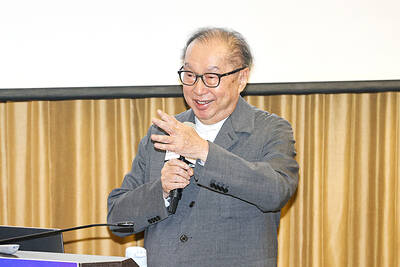Two years after Britain had its first coal-free day since the Industrial Revolution, the nation’s network operator is readying itself for life without any fossil fuels.
The grid might start dropping its need for natural gas power for short periods in about 2025, coinciding with coal’s complete phaseout.
The system wants to be “zero-carbon capable” by then, said Julian Leslie, head of national control at National Grid PLC’s electricity system operator.
While natural gas regularly provides more than half of the UK’s electricity, increasing wind and solar power output means the need for the fossil fuel is sometimes very low, falling below a quarter of usage on windy days.
To eliminate the need for fossil fuels, the UK will need to begin thinking about how to replace gas stations straight away, Leslie said.
New market rules to retain transparency and competitive tension, as well as calls for tenders as early as next year for new types of equipment will also be needed.
“All of those things need to happen in order to make the zero-carbon-in-2025 aspiration happen,” Leslie said in a telephone interview. “In 2025, it may just be for half an hour, it may just be for an hour. Then gradually, in the years that follow, that time period will grow and grow.”
National Grid’s Electricity System Operator was created on Monday last week as a legally separate entity within National Grid PLC. Its aim is to promote competition on the UK’s power and gas network to the benefit of consumers.
To keep the system balanced, the network may need new technology, such as flywheels and supercharged capacitors, he said.
Large coal and natural gas power stations give the network more resilience, known as inertia, because they have heavy spinning shafts and turbines, while solar and wind plants reduce grid stability as they are dependent on weather conditions.
Flywheel storage works by spinning a rotor at high speed to maintain energy in the network. Supercharged capacitors or condensers can deliver high volumes of electricity quickly, but the volume delivered is limited.
“Given the UK’s battery storage current and future capacity, I would have imagined the issue would have to be addressed closer to the 2030s,” said Diego Marquina, an analyst at Bloomberg New Energy Finance in London. “As a preemptive measure, it feels like it’s coming surprisingly soon.”
Without gas and coal, it will probably be crucial to create the systems to address network fluctuations to limit crashes and blackouts.
“It’s definitely short-term storage they are looking for here,” Marquina said.
“There might be a risk for the grid if you are only relying on a few traditional spinning turbines such as from the nuclear reactors and biomass generation — if one of those trips, then that might be very challenging to deal with,” Marquina added.

BYPASSING CHINA TARIFFS: In the first five months of this year, Foxconn sent US$4.4bn of iPhones to the US from India, compared with US$3.7bn in the whole of last year Nearly all the iPhones exported by Foxconn Technology Group (富士康科技集團) from India went to the US between March and last month, customs data showed, far above last year’s average of 50 percent and a clear sign of Apple Inc’s efforts to bypass high US tariffs imposed on China. The numbers, being reported by Reuters for the first time, show that Apple has realigned its India exports to almost exclusively serve the US market, when previously the devices were more widely distributed to nations including the Netherlands and the Czech Republic. During March to last month, Foxconn, known as Hon Hai Precision Industry

Taiwan Semiconductor Manufacturing Co (TSMC, 台積電) and the University of Tokyo (UTokyo) yesterday announced the launch of the TSMC-UTokyo Lab to promote advanced semiconductor research, education and talent development. The lab is TSMC’s first laboratory collaboration with a university outside Taiwan, the company said in a statement. The lab would leverage “the extensive knowledge, experience, and creativity” of both institutions, the company said. It is located in the Asano Section of UTokyo’s Hongo, Tokyo, campus and would be managed by UTokyo faculty, guided by directors from UTokyo and TSMC, the company said. TSMC began working with UTokyo in 2019, resulting in 21 research projects,

Ashton Hall’s morning routine involves dunking his head in iced Saratoga Spring Water. For the company that sells the bottled water — Hall’s brand of choice for drinking, brushing his teeth and submerging himself — that is fantastic news. “We’re so thankful to this incredible fitness influencer called Ashton Hall,” Saratoga owner Primo Brands Corp’s CEO Robbert Rietbroek said on an earnings call after Hall’s morning routine video went viral. “He really helped put our brand on the map.” Primo Brands, which was not affiliated with Hall when he made his video, is among the increasing number of companies benefiting from influencer

Quanta Computer Inc (廣達) chairman Barry Lam (林百里) yesterday expressed a downbeat view about the prospects of humanoid robots, given high manufacturing costs and a lack of target customers. Despite rising demand and high expectations for humanoid robots, high research-and-development costs and uncertain profitability remain major concerns, Lam told reporters following the company’s annual shareholders’ meeting in Taoyuan. “Since it seems a bit unworthy to use such high-cost robots to do household chores, I believe robots designed for specific purposes would be more valuable and present a better business opportunity,” Lam said Instead of investing in humanoid robots, Quanta has opted to invest